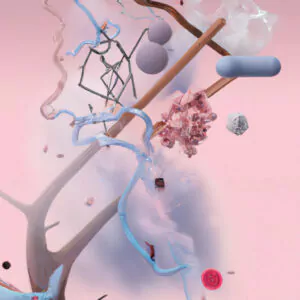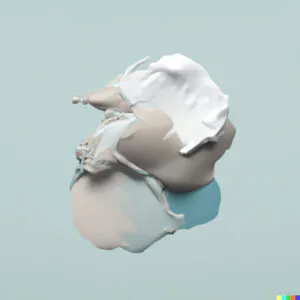Art, since the beginning of human civilization, has been an omnipresent force, constantly mutating and evolving in its forms. It has the power to transcend time and culture, embodying the spirit of the epoch in which it was conceived. Just as we have transitioned from cave paintings to Renaissance masterpieces, and from impressionism to digital art, we now find ourselves on the cusp of yet another transformation: the integration of artificial intelligence into the realm of art and design.
The arrival of AI has stirred the pot, leading us to grapple with questions around originality, copyright, and the very nature of creativity. While it is an exciting development, it’s also raising some eyebrows. But this is not unusual; any new tool, invention, or trend tends to create ripples before it finds its place in the grand scheme of things.
Historical Interludes: Art and Tools
From the chisel to the paintbrush, from the canvas to the computer screen, artists have always adapted their talents to utilize the tools available in their time. Leonardo da Vinci, for example, used the camera obscura, a precursor to modern photography, to study light and perspective.[2]
A glance towards the Far East reveals that this trend is not limited to the Western world. Chinese artists traditionally honed their skills by copying the works of masters, a practice known as Linmo. This practice gave birth to numerous works of art, each bearing the indelible touch of the individual artist despite their origin in imitation.[2]
Art’s relationship with technology has been an enduring one. Thus, the emergence of AI as a new tool in the arsenal of the modern artist seems like a natural progression in this continuum.
Artificial Inspiration: AI in the Art World
So, where does AI fit into the grand tapestry of art? Many argue that AI-generated art is just a new tool awaiting mastery, akin to the first paintbrushes or chisels. Others, however, worry about its implications on originality and copyright.
At its core, AI, with its learning algorithms, functions in a way that’s remarkably similar to a human artist. It observes, it learns, it creates. But, instead of brush strokes on a canvas, it utilizes lines of code and vast databases of images.
AI’s role in art is multifaceted. It can be a tool to aid the creative process, a collaborator that offers unexpected perspectives, or even a solo artist, generating captivating pieces with little human intervention.
AI has been at the helm of some spectacular creations, such as the first AI-generated portrait, “Edmond de Belamy,” which sold at Christie’s auction house for an astounding $432,500.[3] The image was created by an algorithm developed by Paris-based art collective, Obvious.
Author or Tool: Who Owns the Copyright?
This brings us to a vexing question: who owns the copyright to AI-generated art? The tool or the master?
From my perspective, as an artist with a Master’s degree, I see AI as just another tool — albeit an advanced one. I provide the prompt, select the style, evaluate the composition, color scheme, and details. Without a sound understanding of these elements, the outcomes of AI can be inconsistent.
However, the process of creation is much more complex. I might generate 200 images, each unique in its own way, to find that perfect one. It is akin to a miner sifting through heaps of stone in search of a diamond. In this scenario, is the value attributed to the miner or his tools?
In the past, the artist was valued for their skills and creativity. But, as AI begins to encroach upon the creative space, it’s only fair to question whether we will see a shift in this perspective.
Adapting to Change or Sticking to Old Values?
Ultimately, the question that looms over us is: will art adapt to incorporate AI, or will it stick to its age-old values?
I believe that just as art has assimilated numerous technological advancements in the past, it will continue to do so. But, in this adaptive process, it will not lose its inherent essence. Instead, it will evolve, becoming richer and more diverse.
Will AI-generated artworks ever be valued as much as traditionally-created ones? Well, I’ll let you decide that.
Despite the debates, there is no denying the wind of change is blowing in the art world. Whether we choose to resist or ride this wind, only time will tell.
Disclaimer: The core of this article was authored by me, with some edits by AI. All images attached to this post are AI-generated.








Test Comment